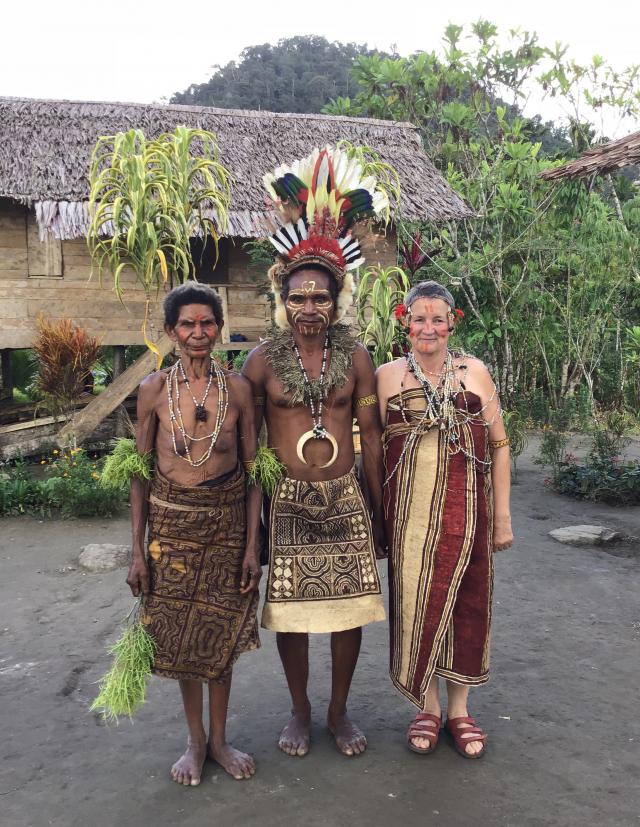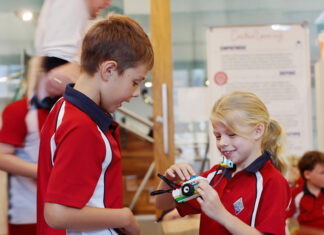For the first time, a rare exhibition celebrating this ancient tradition and the work of the Omie people is on show at Caloundra Regional Gallery, providing a visual and textural journey of this culturally rich artistic community.
Omie Tapa cloth, from the Oro Province, Papua New Guinea, is beaten bark cloth, which is painted or appliqued. This Tapa is recognised as the most dramatic, colourful and compositionally diverse traditional tapa in the Pacific region.
Sihot’e Nioge: When Skirts Become Artworks is presented until 4 December and offers a range of public workshops (bookings essential) to enhance this cultural journey.
Sihot’e Nioge, is curated by Joan Winter, Baboa Gallery, who makes regular visits to work with the Omie in their remote rainforest territory.
Together, Winter and the Omie have initiated this first touring exhibition, a masterful achievement for such a remote group of artists.
“There are around 2000 Omie people, who are a distinct cultural group with their own language,” Ms Winter said.
“They live in seven main villages and many more hamlets on the slopes of Mts Lamington (Humeavo) and Obo, the mountainous region near Kokoda, and the site of their creation story.
“In this story, the first man Mina asked the first woman Saja, to go down to the river, find the right tree, remove its bark, beat it on the river stones, soak it in mud and then wear it back to him, thus sanctifying the first marriage with the first Omie ritual, and the beginning of Omie culture and society
“The Omie Peoples’ origin story confirms the status of tapa as sacred and central to their culture and their two traditional tapa styles, nioge and sihot’e, are presented in this exhibition.“
Sunshine Coast Council Arts Portfolio Councillor Baberowski said the exhibition was a very well curated insight into one specific Papua New Guinea’s community who use important expressions of their cultural traditions as well as aspects of their natural and social history in these contemporary artworks.
“The exhibition is a stunning example of various cultural elements expressed in dramatic symbolic representations and pattern; the skills and techniques have been developed over generations to powerfully understand and utilise the constraints of the natural materials available,” Cr Baberowski said.
“I encourage everyone to visit this rare exhibition to experience this stunning and dramatic visual arts journey and important social enterprise program of one community within an important near neighbour to Australia.”
For exhibition details go to gallery.sunshinecoast.qld.gov.au/Exhibitions/Sihote-Nioge








